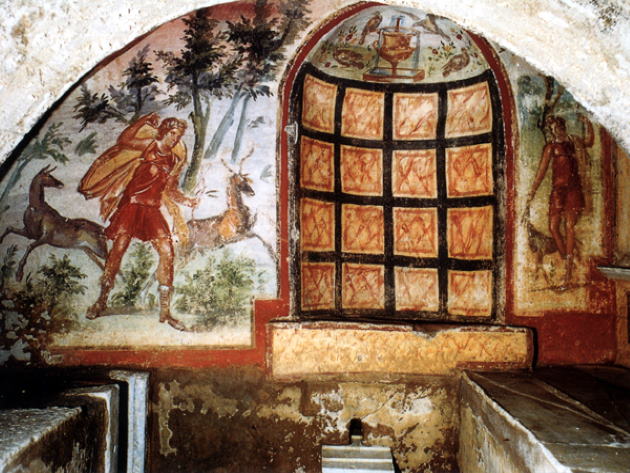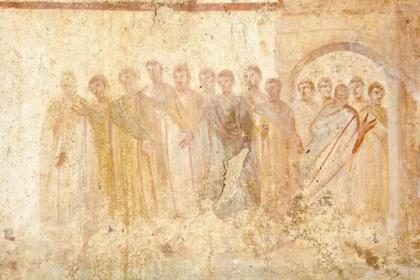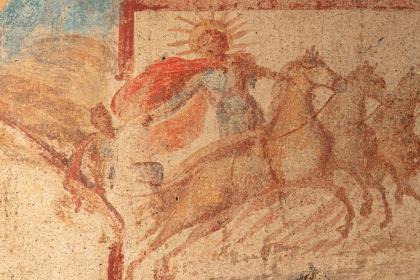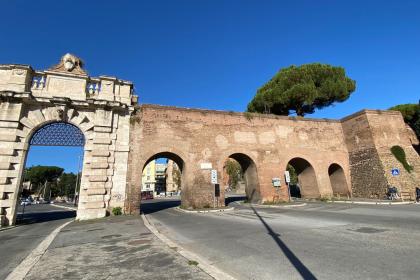
Not far from the Aurelian Walls and the gardens of Villa Borghese, a narrow entrance and a steep staircase that still retains some ancient steps give access to a fascinating, and mysterious, underground archaeological site. Its discovery dates back to the early 1920s, during excavation works for the construction of a building between Via Livenza and Via Po, in the Pinciano district: since then, scholars have continued to debate its function.
The hypogeum had an elongated plan, with a main apsidal hall and a number of secondary rooms: today only a small trapezoidal portion of it is preserved, which, however, gives us an idea of its beauty and uniqueness. The northern wall, parallel to the back wall, is divided into three adjacent arches. In the central arch, decorated with frescoes and mosaics and bordered by two marble transennae, there is a deep rectangular basin equipped with a system to make the water flow and drain. In the rich and complex decoration of the site, pagan depictions, such as the hunting goddess Diana and a woodland nymph with deer and roe deer, alternate with Christian subjects, such as two doves drinking in a pitcher filled with water and remnants of a mosaic in which a baptism scene appears to be depicted.
The hypogeum is concordantly dated to the second half of the 4th century AD, a period consistent with both the classicism and richness of the decoration and the pagan-Christian ambiguity. However, the characteristics of the site do not allow for a unique interpretation. Numerous suggestive hypotheses have been advanced over the years to explain its function: it has been thought to be a place dedicated to the Thracian goddess Cotys, worshipped by the mystery sect of the Baptai, an ancient baptistery, a temple related to water worship, a hidden area intended for magical practices, or even a meeting place for a syncretistic sect. According to some scholars, the environment may be more simply a nymphaeum built in relation to an ancient natural underground spring, which not only affects the architecture and depth of the building but is also the central theme of the mosaic and pictorial decoration.
Hypogeum of the Aurelii

 Condividi
Condividi
Barberini Mithraeum

 Condividi
Condividi
The Aurelian Walls

 Condividi
Condividi
Information
Admission to the monument is allowed to groups and associations, with their own guide, who must make a reservation at 060608 (daily, 9.00 - 19.00).Maximum 10 people per visit.For individual visitors, who must also make a reservation at 060608, individual visits are also possible according to a schedule specified on the page > Monumenti del territorioStarting from 01/08/2024 the site will be temporarily closed to the public for the start of the works envisaged by the PNRR
 Condividi
Condividi
Location
To find out about all accessibility services, visit the Rome accessible section.











































